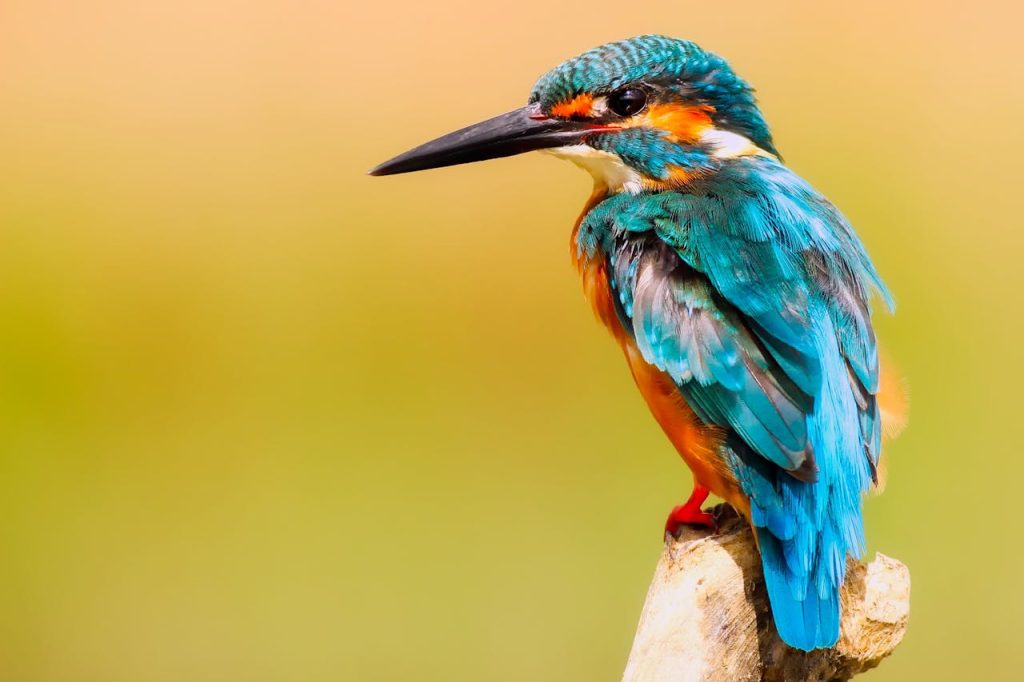
Birds are some of the most captivating creatures in the animal kingdom. From their vibrant colors and intricate behaviors to their melodious songs, birds never fail to inspire awe. Whether you’re observing them in your backyard or watching them soar across the skies, birds have an undeniable charm that appeals to nature lovers worldwide. In this post, we’ll explore the beauty of birds, their incredible diversity, and some of the most fascinating facts about them.
The Diversity of Birds
With over 10,000 species worldwide, birds are among the most diverse groups of animals on the planet. They can be found in almost every habitat, from dense rainforests and arid deserts to urban areas and icy polar regions. This wide range of environments has led to an incredible variety of species, each with its unique adaptations and characteristics.
1. Songbirds
Songbirds, or passerines, are perhaps the most familiar type of bird. Known for their melodious calls, they make up nearly half of all bird species. Songbirds, such as sparrows, robins, and finches, are common in gardens and parks, often delighting people with their beautiful tunes.
2. Raptors
Raptors, or birds of prey, include species like eagles, hawks, and owls. These birds are known for their sharp talons, keen eyesight, and powerful hunting skills. They play a crucial role in ecosystems by keeping the population of small animals and rodents in check.
3. Waterfowl
Ducks, geese, and swans are examples of waterfowl, birds that are primarily adapted to life on or near water. They have webbed feet, which make them excellent swimmers, and are often seen in lakes, rivers, and coastal regions.
4. Flightless Birds
Not all birds are capable of flight. Ostriches, emus, and penguins are among the most well-known flightless birds. Despite their inability to fly, these birds have evolved other fascinating traits. For instance, penguins are excellent swimmers, while ostriches are the fastest two-legged runners on Earth.
Bird Migration: A Journey Across Continents
One of the most awe-inspiring behaviors in the avian world is migration. Every year, millions of birds travel thousands of miles, often crossing continents, in search of food and suitable breeding grounds. This remarkable feat requires incredible endurance and navigation skills.
1. Why Do Birds Migrate?
Birds migrate primarily for two reasons: food and breeding. As seasons change, especially in temperate regions, food sources can become scarce. Birds travel to warmer climates where food is more abundant during the winter months. Similarly, they migrate to specific areas to breed, where conditions are ideal for raising their young.
2. Famous Migratory Birds
Some birds are famous for their long-distance migrations. The Arctic tern, for example, holds the record for the longest migration, flying from the Arctic to the Antarctic and back each year—a journey of up to 44,000 miles! Another well-known migratory bird is the bar-tailed godwit, which can fly non-stop for over 7,000 miles without taking a break.
Birds’ Incredible Adaptations
Birds have evolved various adaptations that make them perfectly suited to their environments.
1. Beaks and Feeding
One of the most noticeable adaptations in birds is their beak shape, which is often perfectly suited to their diet. For instance, hummingbirds have long, slender beaks that allow them to feed on nectar from flowers, while woodpeckers have strong, chisel-like beaks for pecking into trees to find insects.
2. Feathers
Feathers are a defining characteristic of birds, serving multiple purposes beyond just flight. They provide insulation to keep birds warm, camouflage to help them blend into their surroundings, and they’re also used in courtship displays to attract mates. Some birds, like the peacock, are known for their extravagant feather displays.
3. Vision
Birds have exceptional eyesight. Raptors like eagles can spot prey from great distances thanks to their sharp vision. Similarly, owls have specially adapted eyes that allow them to see clearly in the dark, making them effective nocturnal hunters.
Bird Communication and Intelligence
Birds are not only beautiful but also intelligent creatures with complex communication systems.
1. Birdsong
Many birds communicate through song, which serves various purposes, such as attracting mates, defending territory, or warning others of predators. Songbirds, in particular, have a wide range of vocalizations, and some species can even mimic the sounds of other animals or man-made noises.
2. Problem-Solving Skills
Some bird species have demonstrated impressive problem-solving abilities. Crows and ravens, for example, are known for their intelligence and can solve complex puzzles to access food. These birds have even been observed using tools, such as sticks, to retrieve insects from hard-to-reach places.
Bird Conservation: Protecting Our Feathered Friends
Unfortunately, many bird species are facing threats from habitat loss, climate change, and human activities. It’s estimated that 1 in 8 bird species is currently at risk of extinction. Conservation efforts are essential to protect these creatures and preserve the biodiversity of our planet.
1. Habitat Protection
Preserving natural habitats is one of the most effective ways to protect bird populations. Wetlands, forests, and grasslands are all vital ecosystems that provide shelter and food for a variety of bird species. Conservation organizations work to protect these areas from deforestation, pollution, and urban development.
2. Reducing Pesticide Use
Pesticides used in agriculture can have devastating effects on bird populations, particularly by poisoning their food sources. By promoting organic farming practices and reducing the use of harmful chemicals, we can help ensure a safer environment for birds.
3. Public Awareness and Education
Raising awareness about the importance of birds and their role in ecosystems is crucial. Public education campaigns encourage people to take actions like setting up bird feeders, participating in citizen science projects, and supporting wildlife conservation initiatives.
Conclusion
Birds are a vital part of our natural world, offering beauty, song, and fascinating behavior. From their diverse species to their incredible adaptations, they continue to captivate and inspire people of all ages. However, with many bird species facing threats, it’s important that we take steps to protect these winged wonders for future generations. Whether you’re a seasoned birdwatcher or just someone who enjoys the sight of birds in your garden, there’s no denying the profound impact birds have on our world.
